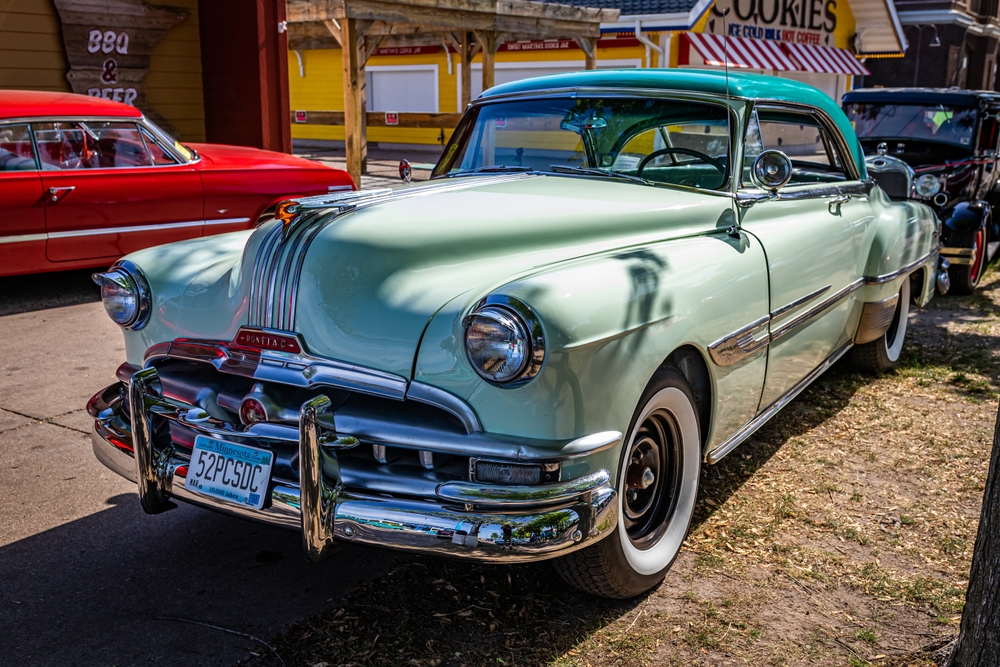
The classic car market has surged again in 2025, pulling longtime collectors and new buyers into a race that feels equal parts competition and nostalgia. Prices climbed over the past year, and some models now sell for amounts once reserved for rare art. The momentum shows no signs of slowing, and buyers continue to treat certain vehicles as investments with real upside. The classic car market has become a measuring stick for confidence, wealth, and interest in tangible assets. And the surge reveals something deeper about how people want to hold value in an unpredictable economy.
Scarcity Is No Longer Theoretical
The classic car market relies on a basic truth: supply shrinks with time. Cars rust, get wrecked, or disappear into long-term collections. Scarcity turns from an idea into a visible force. It pushes prices upward with blunt force.
Models once considered accessible now feel rare. Clean examples of 1960s and 1970s performance cars sit in private garages instead of public listings. And when an untouched model reaches the open market, bidders chase it hard. The classic car market reacts instantly to anything resembling originality because untouched vehicles look like anchors of a fading era. The harder they are to find, the more valuable they become.
Electrification Creates New Urgency
Modern vehicles move toward full electrification, a shift that leaves combustion engines feeling like artifacts of a mechanical age. The classic car market benefits directly from this change. The more regulators push EV adoption, the more buyers cling to the rumble of older engines.
Collectors want the analog experience before it becomes a relic. They want the sounds, the smells, and the sensation of a machine built without software screens. That urgency drives aggressive bidding, especially for cars with iconic engines. Even mid-tier classics see renewed interest simply because they represent something the future will phase out.
Wealth Migration Into Tangible Assets
Wealth moves. And in 2025, it moved into things people can hold—cars, art, watches, land. The classic car market gained from that shift. Investors wanted assets insulated from digital volatility, and classic cars offer a mix of scarcity and emotional appeal.
Some treat cars as stores of value. Others buy them as hedge bets. The motivations differ, but the effect is the same: more money chasing a fixed supply. When multiple buyers vie for the same piece of history, prices can escalate quickly.
Younger Collectors Change The Playbook
A new generation of collectors stepped in, bringing tastes shaped by childhood posters and early video games. They value performance, design, and authenticity. And they have cash. These buyers helped reshape bidding patterns across auctions.
Cars from the 1980s, 1990s, and early 2000s now climb because these buyers view them as cultural markers. They respond to clean lines, crisp power delivery, and analog controls. The classic car market expands when younger collectors start hunting vehicles that older collectors ignored. Their participation broadens the definition of “classic,” and pushes prices into ranges once considered unrealistic.
The Restoration Gap Widens
Restoring a classic car has never been cheap, but in 2025, the costs climbed into a new bracket. Labor shortages, parts scarcity, and long wait times created a gap between fully restored cars and project cars. That gap widened faster than expected.
Buyers realized it makes more financial sense to pay a premium for a completed restoration. A project may sit unfinished for years. A finished car can hit the road immediately. The value of time became part of the price, and sellers took advantage. As a result, pristine restorations command record numbers, feeding the broader surge within the classic car market.
Cultural Memory Fuels Demand
Nostalgia drives behavior more powerfully than data. People buy pieces of memory. A car tied to childhood or family history feels like a link to something stable. That emotional pull carries real monetary weight.
Pop culture strengthens that effect. Films, streaming series, and social media constantly remind us of iconic models. Once those reminders collide with rising income, the result is simple: people pay more. The classic car market thrives when nostalgia becomes an active force rather than a passive feeling.
What This Means For Buyers In 2025
The classic car market shows no sign of cooling. Prices vary by model and condition, but the trendline points upward. For buyers, the challenge is timing and discipline. Paying a premium today might feel steep, but waiting could be worse. Markets like this rarely deflate without a broader economic shift. Anyone entering now should understand the landscape, the risks, and the reality that scarcity will continue to drive demand.
The boom reflects more than money. It reflects what people want to preserve as the world accelerates toward automation. And it raises the question of how long this rush will last. What models do you think will define the next wave of record-setting classics?
What to Read Next…
- 8 Used Cars That Are Suddenly Skyrocketing in Value
- Estate Sales 101: How to Score Big on Antiques, Collectibles, and Rare Finds
- 7 Classic Cars That Are Still Cheaper Than a New Honda Civic
- 5 Exciting Hobbies for Modern Day Treasure Hunters
- Want a Classic Car Without the Hefty Price Tag? Start With These 5
The post Classic Cars Boom Again: Why Collectors Are Paying Record Prices in 2025 appeared first on Clever Dude Personal Finance & Money.







